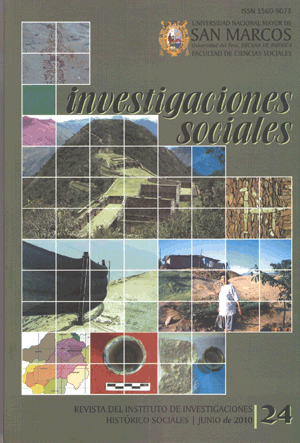La demarcación territorial distrital en la cuenca del río Omas (Asia)
DOI:
https://doi.org/10.15381/is.v14i24.7287Keywords:
Territorial demarcation, District, Basins Hydrographic, Territorial analysis.Abstract
The territory of the Peru according to the political constitution in use, you split into regions, departments, provinces and districts. However the majority of them lack definite limits and indefinition as to the categories of the populated centers, this situation has generated in some cases conflicts between populations placed in bordering areas, deficiency of state presences in the fringe benefit of services, as well as Territorial quarrels. Present investigation takes like unit of analysis the districts the fact that they form splits of a geographic named unit basin hydrographic of the river Omas. The purpose is to evaluate the situation of his limit distritales, identifying possible areas of conflict, diagnosing the categories of his populated centers, determining as the role that the competent institutions in this subject and to propose keep is alternatives of solution to the problems.Downloads
Published
Issue
Section
License
Copyright (c) 2010 Miguel Angel Comeca Chuquipul, Fabriciano Máximo La Torre Ruiz

This work is licensed under a Creative Commons Attribution-NonCommercial-ShareAlike 4.0 International License.
AUTHORS RETAIN THEIR RIGHTS:
a. Authors retain their trade mark rights and patent, and also on any process or procedure described in the article.
b. Authors retain their right to share, copy, distribute, perform and publicly communicate their article (eg, to place their article in an institutional repository or publish it in a book), with an acknowledgment of its initial publication in Investigaciones Sociales.
c. Authors retain theirs right to make a subsequent publication of their work, to use the article or any part thereof (eg a compilation of his papers, lecture notes, thesis, or a book), always indicating the source of publication (the originator of the work, journal, volume, number and date).













